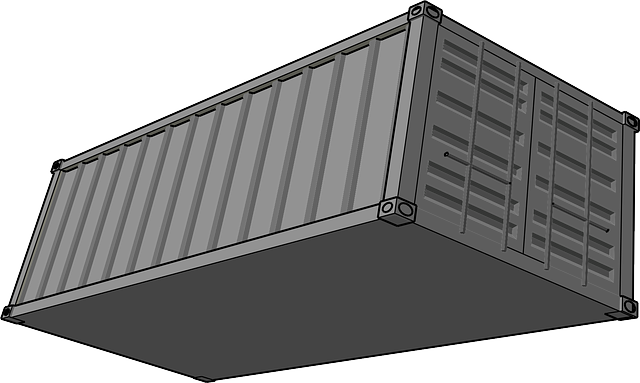Managing a fleet's complex insurance needs is streamlined in the digital age through advanced software and mobile apps. These tools enable real-time tracking of vehicle conditions and locations, simplifying damage assessments and policy renewals. Cloud-based platforms facilitate easy access to claims, renewals, and maintenance records, enhancing claim settlements and proactive management. Automated renewal systems powered by AI reduce administrative burdens, improve accuracy, and save time for insurers and clients alike. Future innovations include IoT integration for tailored risk prediction and prevention in physical damage insurance.
In today’s digital era, fleet management faces significant challenges in efficiently handling insurance tracking and renewals. The process, often cumbersome and time-consuming, involves navigating complex paperwork and manual data entry for each vehicle and driver. This article explores how technology can revolutionize this landscape. We delve into the challenges of traditional fleet insurance management, highlighting the transformative power of digital solutions. From damage insurance tracking to automated renewal systems, discover how tech simplifies processes, reduces costs, and enhances overall efficiency, particularly in managing physical damage insurance claims.
Understanding the Challenges of Fleet Insurance Management

Managing a fleet involves numerous complexities, especially when it comes to insurance. Businesses face the challenge of keeping track of multiple vehicles, drivers, and their respective coverage needs. Each vehicle may require distinct insurance policies, considering factors like usage patterns, driving history, and specific risks associated with different operations. For instance, a company’s delivery fleet faces higher physical damage insurance claims due to frequent road interactions.
Moreover, the process of renewing insurance policies can be cumbersome, demanding significant administrative efforts. Insurers often request detailed documentation for each vehicle, driver, and business operation, leading to a lengthy verification process. This manual approach not only consumes valuable time but also increases the chance of human error. Streamlining these tasks is crucial for fleet managers to focus on core business activities while ensuring optimal insurance coverage and reduced operational risks.
The Role of Technology in Streamlining Processes

In today’s digital era, technology plays a pivotal role in revolutionizing fleet management practices. One of the most significant areas where this transformation is evident is in simplifying processes related to physical damage insurance tracking and renewals. Advanced software solutions and mobile applications have streamlined how insurance claims are managed, making the entire process more efficient and transparent.
These digital tools enable real-time monitoring and reporting of vehicle conditions, facilitating quicker assessments for physical damage insurance claims. By integrating with GPS systems, they provide accurate location data, helping in rapid response times during accidents or theft incidents. Furthermore, automated renewal systems powered by artificial intelligence and machine learning algorithms ensure that policy renewals are handled efficiently without any human error, keeping fleet owners and managers stress-free and well-organized.
Implementing Digital Solutions for Damage Insurance Tracking

In today’s digital era, fleet managers are increasingly turning to technology to streamline processes like physical damage insurance tracking and renewals. Traditional methods often involve manual paperwork and lengthy processes, leading to inefficiencies and potential errors. However, implementing digital solutions offers a transformative approach.
These innovative tools enable real-time monitoring of vehicle conditions, facilitating faster and more accurate damage assessments. Through cloud-based platforms, fleet owners can access comprehensive data on insurance claims, policy renewals, and maintenance records with just a few clicks. This not only simplifies the claim settlement process but also empowers proactive decision-making for better fleet management.
Benefits and Future Prospects of Automated Renewal Systems

Automated renewal systems for fleet insurance offer a host of benefits, revolutionizing traditional processes and enhancing efficiency for both insurers and policyholders. One of the key advantages is the reduction in administrative burdens; these systems streamline the entire renewal process, eliminating manual data entry and minimizing errors associated with human intervention. This leads to significant time savings, allowing insurers to focus on more strategic tasks while ensuring a smoother experience for clients.
Moreover, automated systems provide improved accuracy in risk assessment and pricing. By utilizing advanced algorithms and real-time data, they can analyze historical claims, vehicle usage patterns, and driver behavior, enabling dynamic pricing based on individual risk profiles. This ensures fairer premiums, especially for commercial fleet operators who may face fluctuating operational costs. The future prospects include enhanced integration with Internet of Things (IoT) devices, such as telematics trackers, to offer even more tailored insurance solutions, particularly for physical damage insurance, by predicting and preventing potential risks.
In conclusion, leveraging technology to simplify fleet insurance tracking and renewals offers significant advantages in managing risks and enhancing operational efficiency. By implementing digital solutions for physical damage insurance tracking and adopting automated renewal systems, fleet managers can save time, reduce errors, and improve overall cost-effectiveness. The future of fleet insurance management looks promising with ongoing innovations, ensuring a safer and more streamlined process for all stakeholders involved.
